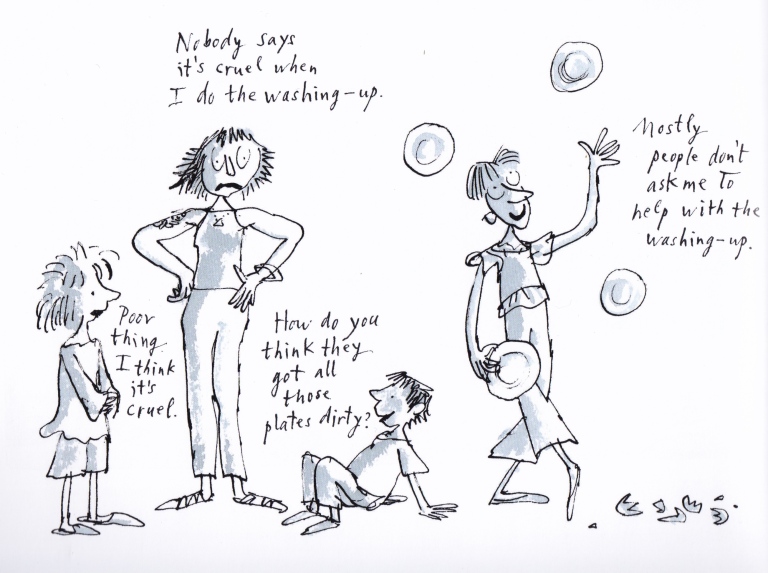
In my recent review of Laura Carlin’s Ceramics I was remided of an exhibition curated by the then Children’s Laureate Quentin Blake at the National gallery in 2001.

Tell me a Picture placed fine art next to the work of some of the world’s greatest illustrators – an unusual concept even today, and one which came as a total revelation to me in my mid 20s. As Blake said at the time, “I think this exhibition will give rise to a lot of words“, and I still remember that the level of chatter in the Sunley room at the National was unprecedentedly loud that day as guides, parents and teachers talked to parties of excited children about what they saw.

Seeing the work of John Burningham again, an illustrator whose style had burnt itself into my synapses at a very early age, sent me way back. The rest of the exhibtion set me on a track that has led to this very point. I was introduced to an amazing array of artists including Paula Rego, Edward Hopper and François de Nomé, and illustrators whose work was entirely new to me: Lisbeth Zwerger, Roberto Innocenti and Emma Chichester Clark.

Blake had rightly concluded that children would make no distinction between whether the picture on display was a piece of art or an illustration. They would simply respond spontaneously and naturally to the image that made the greatest impact. He warns adults not to ‘presume too quickly what is going to interest children: it’s possible that a picture of another child may be less interesting than one of someone having their head cut off! Their choices can be surprising.’

There is no guiding principle in either the exhibition or its accompanying book. 26 works of art, shorn of their titles and displayed in alpahabetical order, ‘you are invited to look at them all just as pictures.’ Turn the page and the picture sits alone with a blank page facing. There are no distractions, and we are invited to lean in and get lost in the picture and its story.

Blake writes of his selection criteria: ‘The first requirement for my choice of pictures here was that they should have some sense of story in them. Sometimes the exact nature of the story isn’t clear, but then the invitation to imagine it may be all the stronger. In fact one of the main purposes is to invite you to think about what you feel is happening in these pictures.’

Each of the pictures is attended by commentary from a troop of exhburant Quentin Blake children, offering comment on the works. My abiding memory of the exhibition itself was just this; crowds of school kids in colourful polo shirts and jumpers crowding around the pictures chatting eagerly.

As the Children’s Laureate, Blake had been given an enviable job description, which Neil MacGregor says, ‘required the ability of the postholder to be able to enjoy the job. If evidence of this were needed, it is contained in this book.’

Tell Me a Picture is available in a new edition, published by Frances Lincoln, from which I have borrowed Blake’s beautifully factual description for each picture. But don’t worry there is still plenty of room for you to paint your own story if you like.


